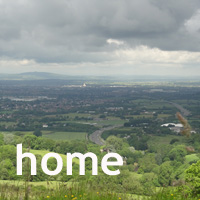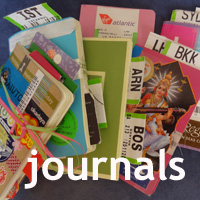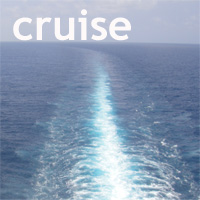On the Panama Hat Trail
 Monday, February 3, 2014 at 9:13PM
Monday, February 3, 2014 at 9:13PM But they don’t come from Panama, as you probably well know…
We woke and enjoyed our breakfast in Manta, Ecuador this morning. It was warm and humid, though a little overcast and not at all the tropical sunshine we’d imagined.
I stepped carefully over this chap to take a closer look at what was going on by the large ship opposite, where they were unloading something. Sand, perhaps? Or gravel?
Every time the crane lifted out another bucketful of whatever-it-was, it would spill lots all over the deck of the ship, over the side and then all around the hopper where the lorries were being loaded. These men were sweeping it all up and pouring it back into the hold – which seemed sensible enough until we discovered it was wheat Here’s hoping it will be well processed before it becomes anything edible.
Oh look, the tour buses are arriving! What fun! Sadly, they weren’t tour buses at all but those assigned to a particular tour by “chiva”. Never mind, something for next time, eh?
Our first stop was the local museum in Manta. Not exactly a huge place, it nevertheless gave us a little background to the history and culture of Ecuador.
All the faces represented in the artefacts on display bore the same facial characteristics and it was interesting to look around and compare them all. Such distinctive noses!
We drove through a few suburbs, for although Manta isn’t a big place and we were soon out in the green, these small communities were fairly well spaced along the road.
In some places, there were modern, social housing developments.
In others, houses sat side by side right there by the road. One thing was clear – Monday is washing day!
Soon, we came to a small village with a loom by the side of the road. This could be interesting.
Sure enough, we were to visit the house and workshop of a family whose business was processing the fibres from the agave plant and turning them into a coarsely woven fabric. Our sweet and very knowledgeable guide Walter, explained each step of the process.
First, the green “leaf” was stripped off, leaving the fibres behind. This was so reminiscent of a similar process in New Zealand where the phormium leaves produce a fibre just like this.
Next, the fibres are cleaned and pulled through the comb-like heckle to get rid of any weaker strands and straighten it all out a little, ready for spinning.
The result is soft and clean. And yes, Jane, the manicure is holding up well as you can see
Next comes the spinning. These ladies were sitting at the noisiest of machines, creating a rough, string-like fibre.
Some of this was destined to be wound onto larger rolls of warp threads, others were split into smaller, shuttle sized weft.
See how rough it is?
The final stage of the process is worked on the loom and we stood and watched as a piece of fabric was created on this manual, treddle-operated machine. There’s something satisfying about the clatter of a loom, the throwing of the shuttle and the gentle turning as the fabric is produced, though the operation must be so very tiring.
The resultant fabric is pretty nice though and yes, that piece is in my bag!
We were curious about these people filling sacks with a rich dark brown material in the field by the village as we left, wondering what they could be doing. Walter explained that the building next door was a coffee mill and these were the spent grounds, composted and recycled into bags of rich growing material. Interesting!
But still no Panama hat? You’ll have to stick with me until the next post, I’m afraid, since it’s time for trivia and it looks like we could be a team of two today! Two of our number have swanned off to Quito overnight and the others are enjoying an Ecuadorian Afternoon Tea somewhere else. So, my hero and I will see what’s what and try not to embarrass ourselves!
I promise, the next post will contain at least one hat. Maybe two. Possibly three!









Reader Comments